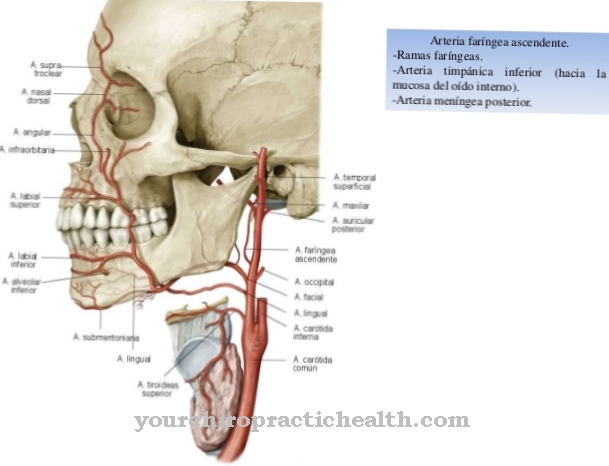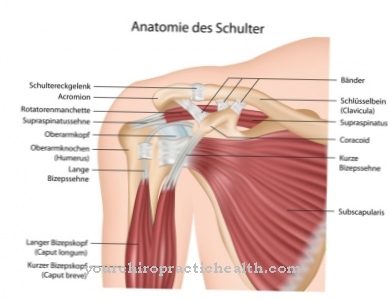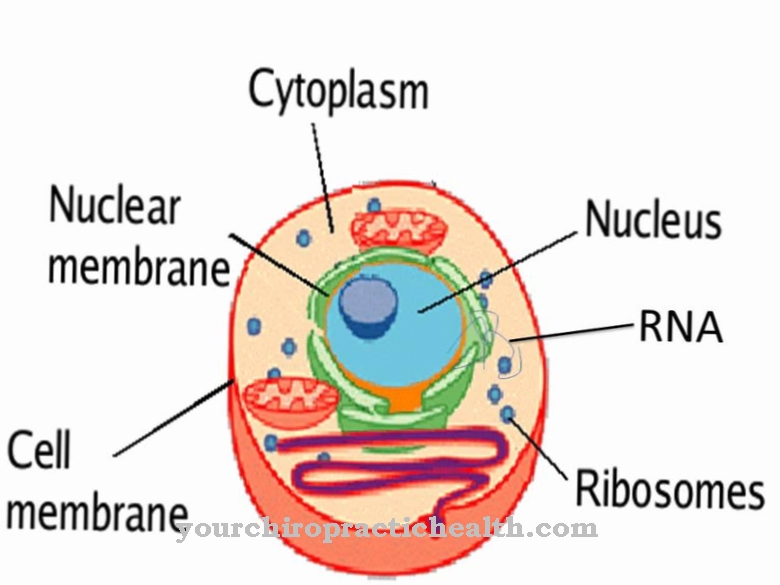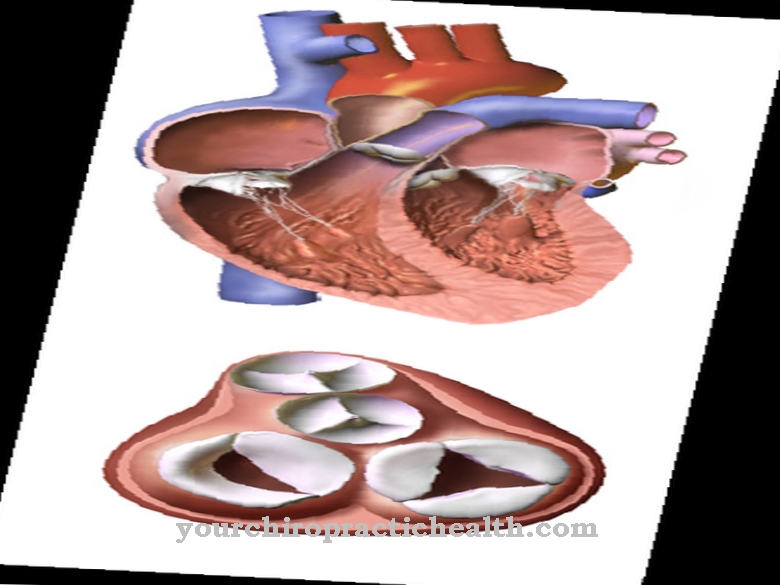The Cholic acid is a primary bile acid that plays a role in fat digestion. It stabilizes lipids to emulsions and makes them vulnerable to lipases. If there is a cholic acid deficiency, fat digestion is disturbed, which is particularly noticeable in a change in the consistency of the stool.
What is cholic acid?
Cholic acid is one of the two primary bile acids and is also called 12α-trihydroxycholanic acid designated. The second bile acid in the primary form is called chenodeoxycholic acid. The starting material for the body's own production of acids is cholesterol. The intermediate stage of production is the pregnenolone. The biosynthesis of the acid takes place in the liver. Cholic acid is one of the four acids most commonly produced in the liver.
Because of its emulsifying properties, the steroid plays a major role in cholesterol metabolism. The acid is converted into bile salts in a biosynthesis and thus forms cholates. In the secondary form, cholic acid gives deoxycholic acid. The medicine uses cholic acid to dissolve gallstones and to support liver health. Cholic acid participates in the enterohepatic cycle and is recycled more than ten times.
Anatomy & structure
Cholic acid is a colorless and crystalline substance with a bitter taste and a melting point of 198 degrees Celsius. The chemical formula for the body's own acid is C24H40O5. The substance is only poorly soluble in water. In this way, it helps to mix substances that are actually immiscible and stabilizes these emulsions. Cholic acids are steroids from the group of sterols, which fall into the class of lipids. Their molecules form lipophilic groups.
This means that they can easily dissolve fats and oils. Lipids are insoluble in water. They have a basic structure made up of four trans-linked carbon rings. All bile acids in fat digestion consist of a hydrophobic and a hydrophilic part. Therefore, they can close around fats, thus enabling lipids to be absorbed in the gastrointestinal tract. In this context, cholic acid is particularly indispensable for the absorption of cholesterol.
Function & tasks
During digestion, the fat digestion enzyme lipase breaks down free fatty acids from lipids such as cholesterol ester. Lipases make stored fats available in the body and are thus also involved in the utilization of fats. Without the splitting off of the free fatty acids, lipids would be indigestible for the body and could not be absorbed into the intestinal walls. So that the splitting off of free fatty acids is more effective, lipids in the gastrointestinal tract are stabilized to form emulsions.
Bile acids such as cholic acid act as emulsifiers in this process. In this way, you make the fats more accessible to lipases. This is preceded by the synthesis of cholic acid in the liver. Here cholic acid is converted to glycocholic acid or glycine-cholic acid amide and taurocholic acid or taurine-cholic acid amide. These acids are transported into the bile. They enter the digestive system as salts. When cholic acids have fulfilled their tasks as emulsifiers, the small intestine absorbs them again. Over 90 percent of the acids are absorbed in a secondary active form through Na + symport.
About two percent is passively reabsorbed through non-ionic and ionic diffusions in the small and large intestines. Through these absorption processes, only about three percent of the cholic acids are released into the large intestine. Cytosolic transport proteins transport the majority of the cholic acid together with anion exchangers through the basolateral membrane back into the blood of the portal vein.
In this way, the cholic acids get back into the liver. They are conjugated in the organ's hepatocytes and are available to the body again. Only a fraction of cholic acid is lost through the stool every day. To make up for these losses, the liver re-synthesizes a small amount of cholic acids every day.
Diseases
When cholesterol breaks out of the cholic acid emulsions, gallstones form. Gallstone disease is a sign of a functional deficit in cholic acid. A deficiency in cholic acid can also cause gallstones, since the substance can no longer do its job in digesting fat in this way. Cholic acid deficiency can have various causes. Congenital bile acid synthesis defects may be present.
Even with chronic intestinal inflammation, there is no longer enough cholic acid, since no more cholic acid is absorbed from inflamed areas in the small intestine. If cholic acid migrates into the large intestine in large quantities every day and is thus excreted in the stool, the flap that separates the small intestine and the large intestine may be affected by inflammation or a tumor. If chronic bowel inflammation is the cause, the primary disease may be the autoimmune disease Crohn's disease. Liver diseases are just as likely to cause a deficiency in cholic acid.
If, for example, not enough cholic acid is synthesized in the liver, the daily losses cannot be sufficiently compensated for in the stool in the long term. Although the losses per day are minimal, in the long run they can add up and cause general cholic acid deficiency. Such a deficiency is usually noticeable in a change in the consistency of the stool. In particular, the fatty stool indicates a deficiency in cholic acid, since fats in the gastrointestinal tract can no longer be sufficiently adsorbed and are thus excreted.













.jpg)

.jpg)
.jpg)











.jpg)